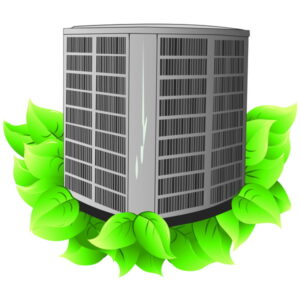 High efficiency is a phrase tossed around plenty in the world of home services. People are often laser-focused on getting appliances labeled as “high-efficiency.” Thankfully, there are government regulations about efficiency that make it easier to identify when a product meets the criteria for improved energy consumption. For electrical products, this is the ENERGY STAR label, which is determined by the US Department of Energy.
High efficiency is a phrase tossed around plenty in the world of home services. People are often laser-focused on getting appliances labeled as “high-efficiency.” Thankfully, there are government regulations about efficiency that make it easier to identify when a product meets the criteria for improved energy consumption. For electrical products, this is the ENERGY STAR label, which is determined by the US Department of Energy.
But when we talk about high-efficiency air conditioners, we’re referring to appliances that go beyond the ENERGY STAR requirement. For a central AC to receive the ENERGY STAR label, it must have SEER (the standard efficiency rating for air conditioners and heat pumps) of 15 or more. But there are central ACs with SEER up to 25. In general, if an air conditioner has SEER greater than 18, it’s considered “high efficiency.” A standard for many high-efficiency systems is 20–22 SEER.
What Makes These ACs So Special?
Although air conditioning manufacturing is better than ever before and the current refrigerant used in residential ACs (R-410A, “Puron”) improves performance, that isn’t the reason high-efficiency air conditioners can have such phenomenal SEER ratings. These high-efficiency units have special features and technology that allow them to make such impressive strides in how they use electricity.
The most important innovations are multi-stage compressors, scroll compressors, and variable-speed fans.
- Multi-stage compressors: With a standard AC, the compressor that powers the cooling process is either on or off, at full power or shut down. Multi-stage compressors can change the power at which they work and alter the flow of refrigerant so they run at a lower capacity. This allows the AC to consume less power when it runs and stops it from draining extra energy each time it starts up. Multi-stage compressors also create a more even temperature spread in a house, with fewer cold and hot spikes.
- Scroll compressors: This is a variant type of compressor that operates differently from a standard rotary compressor. This type of compressor suffers from less energy loss because it has higher capacity than standard compressors.
- Variable-speed fans: This technology is similar to the multi-stage compressor, except it applies to the blower fan sending air through the AC and into the ductwork. The fan can throttle down to a lower capacity and work at 60% rather than 100% when possible. As with multi-stage compressors, variable-speed fans help regulate temperatures and create a more even cooling distribution. They also lower the noise levels from the AC.
Work With Pros for the Best AC Installation
Although a high-efficiency AC is a tempting prospect when searching for new air conditioning in Fountain, CO, it may not be the best choice for a specific home. A high SEER rating isn’t a guarantee of energy savings, and high-efficiency systems come with bigger price tags.
The best way to ensure you end up with a new AC, whether high- or mid-efficiency, that’s the right match for your house is to work with our experts. We’ll help you navigate the different choices and land on your ideal new home cooling.
Robbins Heating & Air Conditioning serves Colorado Springs and the surrounding area. Call us for 24-hour emergency service for your cooling.
